IPCC Climate Report: Red Alert For Humanity. Extreme Weather Events To Get Worse
16 sec ago!~IPCC~[CLIMATE-REPORT+]~IPCC.Climate.Report Shows Alarming Change in Global.Surface.Temperature. [ #Intergovernmental Panel on Climate Change IPCC] Full Report. Panmao.Zhai. Climate.Change,”Intergovernmental Panel on Climate Change”,United Nations,”IPCC Fifth Assessment Report”. Humanity in Danger [Red-Alert]. IPCC.6th.Assessment.Report is out. Ice Cap/Glacier*Global.Warming
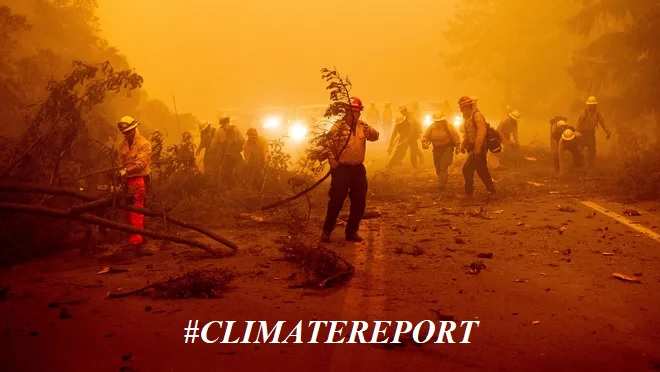
It has been a long time since the last significant report from the Intergovernmental Panel on Climate Change (IPCC), however it has delivered more modest reports from that point forward. In any case, today, the primary piece of the sixth Assessment Report is out. The majority of it ought not astonish you—the rudiments of environment science have been known for quite a long time. What’s more, the overall frameworks were at that point self-evident: practically the entirety of the warming is because of human exercises, and, without prompt activity, we’re ready to blow past 1.5º C of warming.
All things considered, each report is somewhat more helpful than the last, and we will go over what has changed as far as the science and what has changed in how that data is being imparted to general society.
The IPCC is the result of a United Nations association that directions—however doesn’t compose—these reports. The composing is finished by researchers from around the world who volunteer their chance to make these overwhelming books that try to sum up the whole condition of logical information for a wide range of leaders. Each significant report is parted into three working gatherings. The first spotlights on the actual study of the environment framework, the second on the effects of environmental change on people and different species, and the third on strategies for alleviating environmental change.
Today’s delivery is the Working Group I segment of the report. It’s enormous, a result of 751 researchers that references more than 14,000 examinations and information sources. The researchers tended to a huge number of remarks put together by analysts, and its Summary for Policymakers went through a line-by-line endorsement measure. National representatives can request explanation of any sentence, with researchers either obliging them or clarifying why a mentioned change would be off base.
How about we start with the rudiments. Utilizing the normal of the last decade, the report takes note of that surface temperatures have warmed about 1.09°C (1.96°F) since the last part of the 1800s. The new synopsis proclamation about mankind’s commitment to that warming says, “The probably scope of all out human-caused worldwide surface temperature increment from 1850–1900 to 2010–2019 is 0.8°C to 1.3°C, with a best gauge of 1.07°C.” That is, people are liable for roughly every last bit of it.
Placing this into verifiable setting, the report reasons that the current situation with the environment goes past anything the Earth has seen in a long while: “In 2019, climatic CO2 fixations were higher than whenever in no less than 2 million years[… ] Global surface temperature has expanded quicker since 1970 than in some other 50-year time frame over essentially the most recent 2,000 years.”
While the effects of environmental change are essentially the domain of the following working gathering, this report subtleties changes in hazardous climate limits, states of being that influence biological systems, and the long course of events of ocean level ascent that we are currently dedicated to.
At last, projections of different future ozone harming substance focuses feature the prospects we can yet pick between. It is still genuinely conceivable to restrict warming to 1.5° C or 2° C, given the will to act. It is in like manner still conceivable to cross 4° C or 5° C by 2100, given an adequately barefaced dismissal for current and future life on our planet.
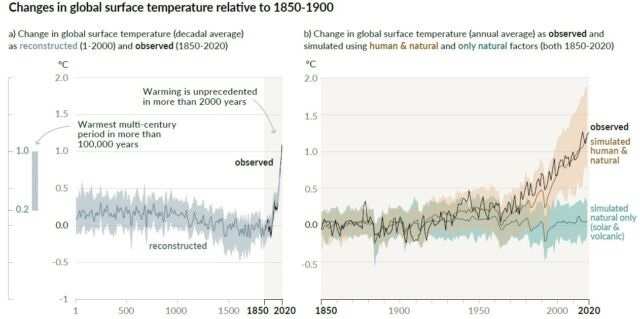
Among the things that quickly leap out in this most recent cycle is an attention on local patterns, especially drifts in limits. Worldwide patterns can veil districts that are heading in inverse ways for different reasons—these can be infringement of general standards like “wet locales get wetter, dry areas get drier” or surprising changes in barometrical dissemination designs. Models aren’t really as great at extending changes on neighborhood scales, however, so it tends to be trying to coax out territorial patterns.
This report looks to make it simpler to see data about a particular region. This is mostly a basic matter of better show (see the fantastic new “intelligent chart book” site) and part of the way progress in what we know—especially on account of late work surveying the job of environmental change in explicit outrageous climate occasions.
“Human-prompted environmental change is as of now influencing many climate and environment limits in each locale across the globe,” the report says. “Proof of noticed changes in limits, for example, heatwaves, substantial precipitation, dry spells, and hurricanes, and, specifically, their attribution to human impact, has fortified since [the 2013 Assessment Report].”
Version 6.0
Getting into the stray pieces a bit more, there are a few eminent updates. Also, those updates start with environment affectability—a proportion of how much warming outcomes from a given measure of ozone harming substance discharges. It’s a tremendous subject with a long history. Back in 1979, a milestone report assessed that multiplying the convergence of CO2 in the climate would bring about 1.5-4.5° C warming, with 3° C the likeliest answer. Those numbers have been amazingly strong.
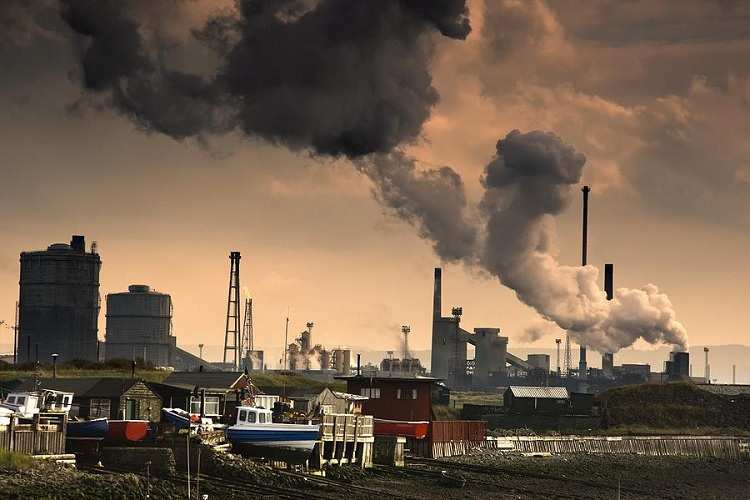
The 2007 IPCC report incorporated a huge update, raising the low finish to 2° C. Dubiously, a couple of studies distributed not long before the 2013 IPCC report prompted its gauge returning to the old 1.5-4.5° C of warming. A significant report we covered last year attempted a work to integrate the present status of examination on this significant number, and it plainly affected this new report. “The AR6 evaluated best gauge is 3° C with a conceivable scope of 2.5° C to 4° C,” it finishes up.
That smaller reach is considered for projections of future warming and ocean level ascent, which are done a little another way this time. The most recent age of environment models has a few eccentricities, with endeavors to work on the authenticity of cloud conduct in specific models having raised their recreated environment affectability over the remainder of the pack. Maybe than utilizing the arrived at the midpoint of model yield straightforwardly as the projections, various lines of proof are currently being consolidated—which has the aftereffect of directing exception models by giving them less weight in the normal.
In any case, projected warming looks recognizable, despite the fact that there’s another arrangement of ozone depleting substance emanations situations, too. Complete warming by 2100 territories from about 1.4° C in a most minimal discharges situation to about 4.4° C in the most noteworthy emanations situation.
Ocean level ascent projections are significantly less intricate than in past reports, where numbers were given for specific supporters of ocean level ascent while different givers were depicted as too unsure to even consider measuring. Logical advancement has been made from that point forward, and this report gives a straight-forward projection for every emanations situation—from about 0.4 meters (1.4 feet) between the mid 2000s to the furthest limit of the century at the low end, to about 1.4 meters (4.7 feet) in the high outflows situation. However, it likewise recognizes a lower-likelihood most dire outcome imaginable more like 2 meters (6.5 ft).

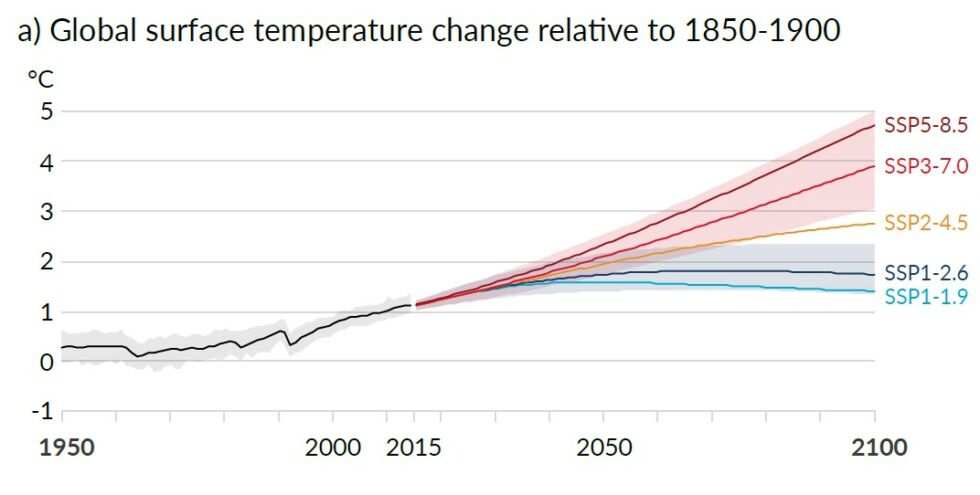
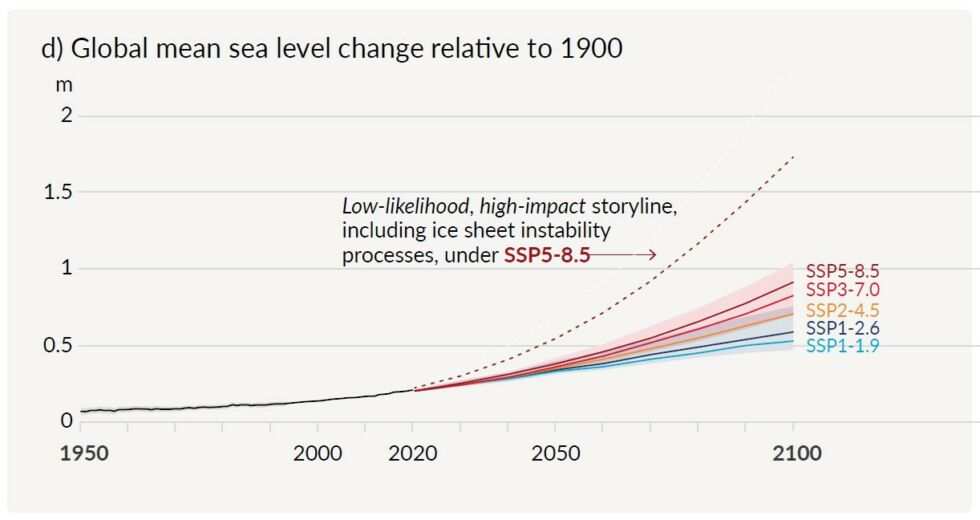
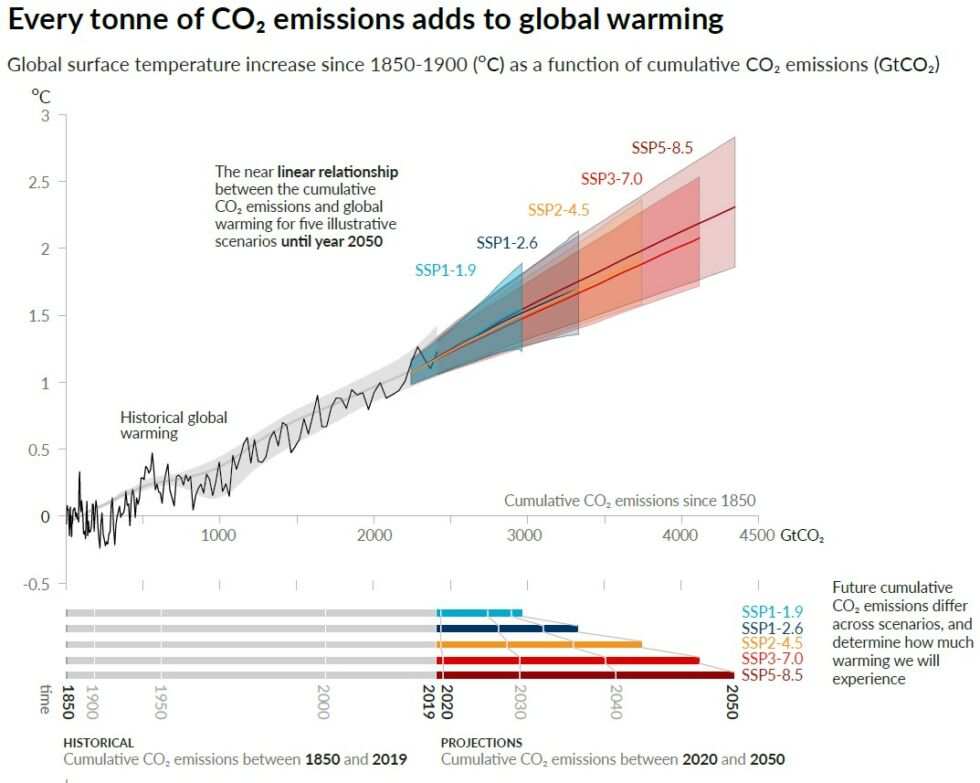
Time To Take Action
This piece just starts to expose the data introduced. It merits looking at the report yourself to find out additional. But at the same time it is actually the case that we’ve adequately realized to follow up on environmental change for quite a long time.
This report sums up the study of how our environment framework functions, yet fixing these issues is, in enormous section, a political errand. This November, a critical international gathering is occurring in Glasgow. The Paris Agreement that was embraced in 2015 incorporated a “ratchet” system, with gatherings held at regular intervals (deferred by the pandemic) for countries to reinforce their promised discharges decreases. This is the primary chance for countries to follow through on that guarantee.
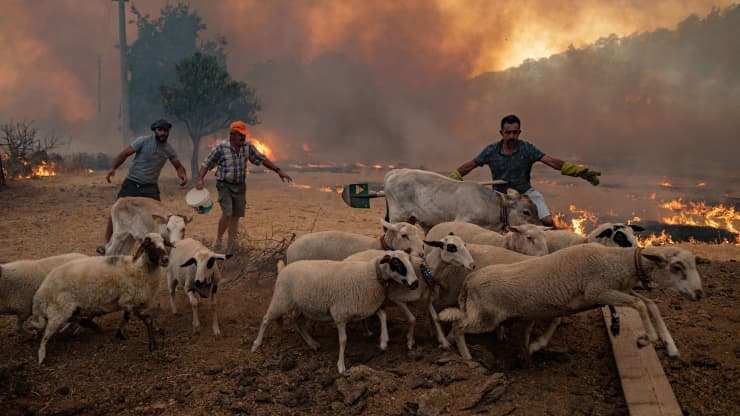
The vows so far do place us on target for warming nearby 3º C—lower than the most noteworthy emanations situation, however a lot higher than we’d like. In any case, this report calls attention to that the human-caused reinforcing of the nursery impact has developed to about 2.7 watts per square meter of the Earth’s surface, which is 0.3 watts higher than it was 10 years prior.
“We can’t fix the errors of the past,” said Inger Andersen of the UN Environment Program during a question and answer session Monday. “Be that as it may, this age of political and business pioneers, this age of cognizant residents, can make things right.”
“Researchers have anticipated the probability of speeding up climate change for over a century now – yet again and again their alerts have been ignored,” said Katharine Hayhoe, boss researcher for the Nature Conservancy. “My expectation is that the meticulousness, straightforwardness and extraordinary earnestness of this most recent IPCC report will make it basically difficult to disregard.”
However large numbers of the report’s expectations portray people’s effect in the world and the results that will have going ahead, the IPCC likewise found that purported tipping focuses, for example, calamitous ice sheet breakdowns, are “low probability,” however they can’t be precluded.
The report comes three months before a significant climate meeting in Glasgow, Scotland.
Right around 200 nations have joined to the Paris climate accord, which plans to keep a worldwide temperature alteration under 2 degrees Celsius (3.6 degrees Fahrenheit), preferably close to 1.5 degrees Celsius (2.7 degrees Fahrenheit), before the century’s over contrasted with pre-modern occasions.
The report projects that in the coming many years, climate changes will increment in all areas. For 1.5°C of an unnatural weather change, there will be expanding heat waves, longer warm seasons and more limited virus seasons; at 2°C of a dangerous atmospheric devation, heat limits would all the more frequently arrive at basic resilience edges for agribusiness and wellbeing, the report shows.
The report, which calls climate change unmistakably human-caused and “unequivocal,” makes more exact and hotter figures for the 21st century than it did last time it was given, in 2013.
“On the off chance that this IPCC report doesn’t stun you right into it, it ought to,” said Helen Mountford of the World Resources Institute, an examination not-for-profit association. “The report illustrates the unforgiving, incomprehensible world we have coming up if our dependence on consuming non-renewable energy sources and annihilating backwoods proceeds. Quite possibly the most striking takeaways is that we might arrive at 1.5°C of warming 10 years sooner than the IPCC had recently found.”
The proof is evident that carbon dioxide is the principle driver of climate change, even as other ozone harming substances and air contaminations assume a part, the report says.
The 3,000-page report “gives an extraordinary level of clearness about the fate of our planet, and the need to diminish – and eventually take out – our emanations of ozone depleting substances,” said Zeke Hausfather of the Breakthrough Institute, a worldwide ecological exploration place.
Many top researchers delivered an overwhelming report Monday on the peril that human-caused climate change postures to the world.
Calling it “code red for humankind,” the milestone report was delivered in Geneva by the United Nations’ Intergovernmental Panel on Climate Change (IPCC).
A significant number of the progressions found on the planet’s climate are uncommon in thousands, if not many thousands, of years, and a portion of the progressions previously set rolling –, for example, an ascent in ocean levels – are irreversible more than hundreds to millennia, as indicated by the report.
Wild climate occasions, for example, tempests and warmth waves, are relied upon to decline and turn out to be more continuous.
The U.N. climate board says “solid and maintained” decreases of fossil fuel byproducts and different nurseries gases would restrict climate change. Advantages, for example, further developed air quality would come rapidly, while it could take 20 to 30 years to see worldwide temperatures settle, it adds.
The IPCC report clarifies that it isn’t just about temperature. It says climate change is acquiring various changes various locales — and all will increment with additional worldwide warming.
These progressions incorporate more extraordinary precipitation and related flooding, more extreme dry season in numerous districts, seaside regions to see proceeded with ocean level ascent all through the 21st century, the enhancement of permafrost defrosting, sea fermentation, among numerous others.
So, what you think? Is this the beginning of the end, like the way “Mesopotamia”, “Babylon”, “Sumer”, “Indus Valley Civilization or Mayan Civilization” may have ended. Because they did not anticipate they were standing near the verge of destruction. Comment bellow.
